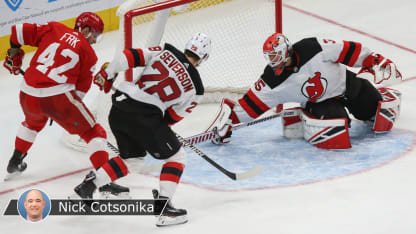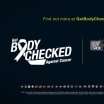"It got to the point if I was bringing my knees into a butterfly position -- internally rotated, they call it -- I'd get a pretty sharp pinch," he said. "And part of the problem is, that bone growth, it makes you stop. It hits the hip joint, and you can't go any further. So my range was somewhat limited."
Schneider underwent a 2 1/2- or three-hour procedure to repair his labrum and shave down the bone. He was off crutches 10 days afterward. Not that it mattered.
"Honestly, it wasn't overly painful or grueling or anything like that," he said. "But the hard part is, you can't really do anything for three months. They don't want you to run, jump, skate. You can lightly bike and do the rehab stretches and exercises. So those first three months, it's just boring. They say, 'If you think you can do something, don't do it. Do less.' "
From May 1 to July 31, Schneider worked on his upper body, core and good leg, and stayed diligent about his diet. Once he reached Aug. 1, he could go on the ice. Still, he had to take it slowly.
"It's basically learning to skate again," he said.
Week 1, circle and light turns. Week 2, a little more. And so on.
It wasn't until Week 6, mid-September, that he was able to drop into a butterfly again.
"I think we did it the right way in terms of going easy on it, so we didn't have any setbacks, no tendonitis, no things that can crop up if you go back too soon," he said.
Schneider played three games for Binghamton of the American Hockey League to mimic an NHL preseason, going 1-1-1 with an .897 save percentage. He relieved Keith Kinkaid in the third period of an 8-3 loss to the Tampa Bay Lightning at Amalie Arena on Tuesday, allowing one goal on six shots in 14:38, then allowed three goals on 30 shots to the Red Wings in 59:08.
It's an adjustment, a process. He still has a lot of stiffness and soreness, which is to be expected. He has a new warmup routine that includes "tractioning," or pulling on the leg to move the femoral head around the hip joint so it feels better.
"I'm going to have to probably do that the rest of my career, but it's hopefully a small price to pay to feel healthy," he said.
The goal is eventually, at 32, to play young again. Many goaltenders have had hip surgery and excelled, including Vezina Trophy winners Tim Thomas of the Boston Bruins (2009, 2011) and Pekka Rinne of the Nashville Predators (2018).
"I've been in touch with a lot of guys, skaters and goalies," Schneider said. "They've all kind of said similar things. One day about a year out, you're just going to get on the ice, and you're not going to notice it anymore, and it's going to feel great."


















